Image courtesy of Michael Leunig
Musings on biblical studies, politics, religion, ethics, human nature, tidbits from science


“in times of crisis, individuals regress to a state of delegated omnipotence and demand a leader (who will rescue them, take care of them)”
and that
“individuals susceptible to (the hypnotic attraction of) charismatic leadership have themselves fragmented or weak ego structures.”
Jerrold Post believes the above hypotheses find support in clinical studies of persons who join charismatic religious groups, those with narcissistic personality disorders, and “psychodynamic observations of group phenomena”. Post and Doucette in Dangerous Charisma
describe the consequences of the wounded self on adult personality development and emphasize how narcissistically wounded individuals are attracted to charismatic leader-follower relationships, both as leaders and as followers.
As I read Dangerous Charisma I was regularly reminded of the time I joined a religious cult years ago and the stories that were regularly shared among members of “how God called us into his church”: certainly most, if not all, of the personal narratives involved tales of some kind of crisis each of us experienced and how “God rescued us” through leading us to encounter his “end-time Apostle”. After I left the cult I attended several other churches for a time and found the same sorts of experiences being “witnessed” even among less extreme fundamentalists or evangelical type Christians. Another perception that hit me, disturbingly, after having left the cult was seeing many of the same vulnerabilities, errors in thinking and willingness to rationalize the irrational and unprovable in society generally. Indeed, Post and Doucette make the point that the model they describe can work for good as well as evil: in times of crisis many turned to the charismatic Churchill, but that after the crisis was over the need for that sort of leader also passed and he was voted out. Other positive instances of such relationships involved Martin Luther King Jr and Mahatma Gandhi. But we all know there are weeds in the garden as well as fruit.
Two types of personality are described:
This is the cult leader, whether religious (Herbert W. Armstrong) or political (Donald J. Trump)
The first personality pattern resulting from “the injured self” is the mirror-hungry personality. These individuals, whose basic psychological constellation is the grandiose self, hunger for confirming and admiring responses to counteract their inner sense of worthlessness and lack of self-esteem. To nourish their famished self, they are compelled to display themselves in order to evoke the attention of others. No matter how positive the response, they cannot be satisfied, but continue seeking new audiences from whom to elicit the attention and recognition they crave.
This is the follower who is nourished by the above leader and who in turn nourishes that same leader:
The second personality type resulting from “the wounded self” is the ideal-hungry personality. These individuals can experience themselves as worthwhile only so long as they can relate to individuals whom they can admire for their prestige, power, beauty, intelligence, or moral stature. They forever search for such idealized figures. Again, the inner void cannot be filled. Inevitably, the ideal-hungry individual finds that their god is merely human, that their hero has feet of clay. Disappointed by discovery of defects in their previously idealized object, they cast him aside and searches for a new hero, to whom they attach themself in the hope that they will not be disappointed again.
The wounded self can arise from social, economic, personality crises. Job and economic and health insecurities, fears of one’s neighbours and newcomers and of conspiracies of powerful forces in government.
Post and Doucette emphasize that this model does not tell the whole story of Trump or political movements arising from the dynamics of the two types feeding off each other, but it does offer some insight into “charismatic leader-follower relationships.”
The mirror-hungry leader requires a continuing flow of admiration from his audience in order to nourish his famished self. Central to his ability to elicit that admiration is his ability to convey a sense of grandeur, omnipotence, and strength. These individuals who have had feelings of grandiose omnipotence awakened within them are particularly attractive to individuals seeking idealized sources of strength. They convey a sense of conviction and certainty to those who are consumed by doubt and uncertainty. This mask of certainty is no mere pose. In truth, so profound is the inner doubt that a wall of dogmatic certainty is necessary to ward it off. For them, preserving grandiose feelings of strength and omniscience does not allow acknowledgment of weakness and doubt.
The leaders love the adulation of the crowds and can often speak for hours basking in their admiration; and the crowds love to be there, feeding and feeding off them.
Central to the rhetoric is the “us-them”, the “me-not me”, the “good versus evil”, “strength versus weakness”, you are “with us or against us”. There’s nothing new here:
Maximilien Robespierre: “There are but two kinds of men, the kind that is corrupt and the kind that is virtuous.”
Hitler dwelt on the themes of strength and weakness, purity and impurity, the chosen (Germans) and the not chosen (Jews). The world is divided and one must conquer the other or be conquered.
We see this mindset in leaders who are convinced, and whose followers are also convinced, they are called on a religious mission. Followers often see the power of God behind them and the entire world of Satan is their opposition. Continue reading “Dangerous Charisma, Cults and Trump”

Recently James McGrath has addressed a point I have regularly made about a key difference between the canonical gospels and historical and biographical narratives by ancient authors: the latter generally attempt to assure readers of the validity of their accounts by mentioning their sources; the former generally do not. McGrath has put an anachronistic slant on the question by making comparisons with the modern practice of formal citations and bypassed the reasons and techniques that belonged to ancient literary culture. Perhaps it is a good thing that he has done so because he does provide a warning to us today to be careful not to confuse modern academic practice with ancient literary interests. Before I respond specifically to some of his points I will focus on what seems to be the key question he poses in his “challenge” to “those who give credence to mythicists”:
The mythicist claim that the Gospels are thoroughly untrustworthy – or more ridiculously, that they are written intended to be taken as allegories that don’t describe anything remotely historical – are really problematic. Perhaps the best way to put it is to ask those who give credence to mythicists this:
- Why trust modern-day mythicists and their claims about what is important, what is valuable, what is reliable, or anything else, while giving no credence even to the broad outlines of what various ancient authors have written?
- Is it anti-religious bias?
- Chronological snobbery?
- A preference for their conclusions?
I ask these questions because there is nothing in what they write that is inherently or obviously authoritative or trustworthy. And so the same questions that apply to ancient sources, apply to modern ones as well. If it is the fact that they (well, some of them at any rate) mention scholars and sources regularly, then that is also true of mainstream scholars who conclude there was a historical Jesus, and it is true of conservative Christian apologists who are demonstrably untrustworthy even when they provide ample citations. And so my appeal to Jesus-mythicists is the appeal I’d make to any and all conspiracy theorists. By all means be skeptical – but be even-handedly skeptical, including of those you’re inclined to be persuaded by, and most importantly, of yourself.
(my formatting and highlighting)
“Trust” is a faith word. So my answer to McGrath’s first and primary question is this: No-one should “trust modern-day mythicists and their claims” about anything.
“Credence” is also a faith word. “Anti-religious bias” and “snobbery” and self-serving (implied) “preferences” for certain conclusions are all well-poisoning terms.
McGrath also speaks of mythicist writings that contain “nothing . . . that is inherently or obviously authoritative or trustworthy”, dismissing any citations by mythicists to mainstream scholarly works as unimpressive for some reason — because some apologists also cite mainstream scholars and produce arguments that are, well, apologetic. The analogy is fatuous, of course. Citations are used by good and bad scholars, good and bad amateurs, in good and bad ways. Therefore, in McGrath’s view, mythicists must for some reason he does not explain and for which he provides no examples be making pointless citations. Yet we know McGrath has excoriated mythicists for not engaging with mainstream scholarship yet when they clearly do engage with mainstream scholarship he allows their conclusions to inform him that their arguments are unreliable. Is it religious bias? Intellectual snobbery? A preference for other conclusions?
Here’s how scholarly inquiry, any serious rational inquiry, works.
We look for evidence that helps us understand the nature of the claims made by ancient (or any) authors. That generally means we begin by analysing the form and context in which the statements are made. We often do this subconsciously. We let the tone of voice or writing help us decide if someone is being serious or joking. We allow the medium on which a message is written (a royal inscription, an officially stamped letter) to tell us if it is an official statement or not. (Official statement indicates that its primary audience is expected to believe what is written; we need other grounds for deciding if we should believe what is written.) The source of what is said is another important factor. A source can mean the person responsible for the words we read; it can further mean the sources available to that author. Provenance can refer either the original source of the document or it can refer to where the physical manuscript or tablet was found and by whom and what we know about how it reached us. All of those factors are important to understand when it comes to reading and interpreting any ancient work.
Where we have prose narratives about events and persons it is necessary for us to know something about how they were understood by their authors and original audiences. I have sometimes half-joked in frustration that no-one should be allowed to undertake studies in the biblical literature until they have first done a major course in classics: biblical studies should be offered only as part of a larger course in early Jewish/Judean literature studies and only as a post-grad course for those who are well-grounded in the wider literature of the ancient world.
In other words, we ought to interpret and evaluate biblical literature in the context of the wider literary world of that day. Biblical scholars will no doubt say that they certainly do that, but my experience with studies in biblical literature tells me that many only do so patchily and over-selectively at best.
If anyone (mythicist or mainstream biblical scholar) makes any claim one should always look for the evidence that supports the claim. No claim should be “trusted”, either. The most positive approach we can have with any claim is to accept it pending further discussion, analysis and evidence. That means continual reading and discussion, learning new perspectives, becoming familiar with more data. It means engagement especially with those who have the most experience with the data, usually the professional scholars, and we find that the most insightful authors of mythicist ideas are the ones who do engage seriously and thoroughly with that scholarship. Leaving the mainstream scholarly field behind and restricting one’s reading to unorthodox views that only sporadically touch on mainstream scholarship is not a healthy pursuit.
Mainstream scholars also have a responsibility to address questions raised about their work without sneering dismissals, elaborate appeals to authority, or misrepresenting the questions and arguments posed to them.
A mythicist claim should not be trusted but should be carefully assessed against the evidence offered and serious discussion about alternative interpretations and other evidence in the mainstream scholarly literature. The most positive response to any claim by a mythicist ought to be tentative acceptance pending further information.
Mainstream scholars need to keep in mind that some mythicist authors have had no axe to grind against Christianity (some have even remained very positive towards it) and that some (one might say many) mythicist authors were for some years believers in a historical Jesus even as atheists and that believing in the historicity of Jesus would make no difference to them ideologically, personally, in any way. Indeed, a number of us have said that mythicism is the worst way to try to undermine or attack Christianity. There are other more effective ways of going about that enterprise.
–o0o–
Back to the specifics of referencing sources. Continue reading “Answering James McGrath’s Questions for Mythicists”

“Why do we do destructive things—to others, and to ourselves? Why do we so often act against our own interests?”
I’ve been catching up on a number of research articles exploring the psychology of Trump followers and am surprised how closely some of the ideas cohere with what I have experienced and learned about the reasons people get mixed up in religious cults. One book I have started and that has me totally in its thrall at the moment is Dangerous Charisma: The Political Psychology of Donald Trump and His Followers by Post and Doucette. I will be sure to write more about that work before too long. But for now, I am keeping it simple and will address just one idea that in part has an overlap with what I have read so far in Dangerous Charisma. What follows is from an article in a September 2019 issue of The Atlantic, “The Most Dangerous Way to Lose Yourself: ‘Identity fusion’ might explain why people act against their own interests.”
The main idea is
that people are always striving to create a world in which their ideas of themselves make sense. We are motivated, sometimes above any sense of morality or personal gain, simply to hold our views of ourselves constant. This allows us to maintain a coherent sense of order, even if it means doing things the rest of the world would see as counterproductive.

It has been developed by Professor William Swann and claims that
we tend to prefer to be seen by others as we see ourselves, even in areas where we see ourselves negatively. As opposed to cognitive dissonance — the psychological unease that drives people to alter their interpretation of the world to create a sense of consistency — self-verification says that we try to bring reality into harmony with our long-standing beliefs about ourselves.
Think of those who tend to sabotage their relationships and withdraw from others who genuinely appreciate them. Their view of themselves is negative and they find it unbearable that others should not agree. That sounds crazy (maybe because it is) but Swann suggests that such behaviour
might actually be part of a fundamental “desire to be known and understood by others.”
That makes sense to me. Maybe it’s not so crazy.
We naturally form bonds with others, whether with family or a religion. Others in this context can be extremely important to us but we don’t generally “identify” with them to the extent that we lose our own separate identity.
Sometimes (and that’s the word that will need to be understood) people do lose their identities to the group, though. Swann posits that the 9/11 terrorists totally lost their personal identities to a group identity that enabled them to die and kill on a horrendous scale. The concept Swann talks about is identity fusion.
The phenomenon is sometimes described as a visceral feeling of oneness with a group or person, and sometimes as an expansion of the self.
“When people are fused, your personal identity is now subsumed under something larger,” says Jack Dovidio, a psychology professor at Yale. One way researchers test for fusion is to ask people to draw a circle that represents themselves, and a circle that represents another person (or group). Usually people draw overlapping circles, Dovidio explains. In fusion, people draw themselves entirely inside the other circle.
“This isn’t the normal way most people think about identity,” says Jonas Kunst, a psychology researcher at the University of Oslo.
Rational discussion that challenges the views of someone whose identity is so fused with a collective or another is impossible. Most people (surely) are open to accepting and debating challenges to their groups’ identities but someone whose personal identity is so fused and lost wholly within the group will see such questions as threats to their identity, a personal threat to themselves.
Arguments about climate change, for example, might not actually be about climate change, and instead about people protecting their basic sense of order and consistency.
Identity fusion is not merely blind obedience to group expectations or submission out of fear, but something much more dangerous:
Fusion is not a bunch of individuals contorting their way of thinking, but a bunch of individuals suspending their way of thinking. “It makes us more likely to do extreme things that aren’t consistent with our normal identity,” Kunst says. “It allows you to do things you couldn’t conceive of doing.”
Oh yes. I bitterly recall some cruel and hurtful things I did, even life-threatening things, when I was totally one {fused) with a religious cult years ago. I think of the pain I hurt my parents, and how I almost allowed a child to die from refusing medical treatment.
Does identity fusion help explain Trump supporters? A set of studies that used an “identity fusion scale” found that
Americans who fused with Trump — as opposed to simply agreeing with or supporting him — were more willing to engage in various extreme behaviors, such as personally .ghting to protect the U.S. border from an “immigrant caravan,” persecuting Muslims, or violently challenging election results.
Why do people who stridently oppose “big government” suddenly find themselves cheering on acts of “extreme authoritarianism”? No problem, according to identity fusion theory:
Value systems are only contradictory if they’re both activated, and “once you step into the fusion mind-set, there is no contradiction.”


This is the second of two articles by Professor of Religion Sarah Iles Johnston. (The first article was addressed in Why Certain Kinds of Myths Are So Easy to Believe) I have been led to Johnston’s articles and books (along with other works addressing related themes by classicists) as I was led down various detours while reviewing M. David Litwa’s How the Gospels Became History: Jesus and Mediterranean Myths. I expect interested readers will see the relevance of Johnston’s thesis to Christian myths in the gospels and understand more deeply the mechanics at work that make them so believable for so many people.
Many Greek mythical narratives (whether poetry, drama or prose) appear to have no necessary relationship with a particular festival or other special occasion. They appear to have a life of their own and can be recited in quite different contexts and often with variations of details and even basic storylines. Variations, hearing only parts of a story that must be somehow fitted with a larger narrative, but with some difficulty because of certain differences of character or details, such presentations of the myths had the potential to arouse intense curiosity and discussion, with individuals surely acquiring their own understanding, view and relationship with a god or hero.
Who would ever imagine any similarity between Socrates and the Homeric hero Achilles? Johnston does not raise this illustration but it is one that illustrates her point well. Plato informs us that Socrates compared himself with Achilles. The philosopher with the warrior? Yes, because Socrates could explain to his audience that like Achilles, he likewise heroically followed what he believed to be the right or pious course of life even knowing it would result in his premature death. Variations in narratives encouraged deeper reflection and personal relationships with what the gods and heroes represented.
As Johnston points out, Greek myths generally were not point by point analogies to the real world but were metaphorical tales that were subject to reinterpretation and different functions or applications. The myth of Persephone, as we saw in the previous post, served equally well for a celebration of the hope for a good harvest and hope for a happier afterlife for initiates into the mysteries.
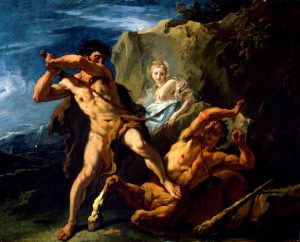
There is a poem by a fifth-century BCE poet, Bacchylides, that offers us another instance such devices that encouraged curiosity and engagement with the myths. In the centre I outline the thought-flow of the poem (in paraphrase) and beside it I have circled all the points that the poem in references in the wider world of Greek myth. Notice how much detail is left to the audience’s imagination, how many questions are potentially raised among those who are perhaps not fully acquainted with all of the associations or who are aware of differences with other accounts, or what questions of character arise when set in the wider mythical world. And why is Heracles being honoured at a festival in honour of Dionysus anyway? The Greeks evidently did not find any strong need to bind each story to a specific or analogous occasion (Johnston). The conclusion is surely designed to provoke much thought and discussion about the death of Heracles and his relations with his first wife, and the role of the Centaur.
One detail not brought out in the following diagram is that several of the related myths are linked to familiar places in the Greek peninsula: the city Heracles razed was in Eritrea, the place where he offered to Zeus was Cape Lithada, for example.
Click on the diagram if it does not appear in full in normal Vridar page setting.
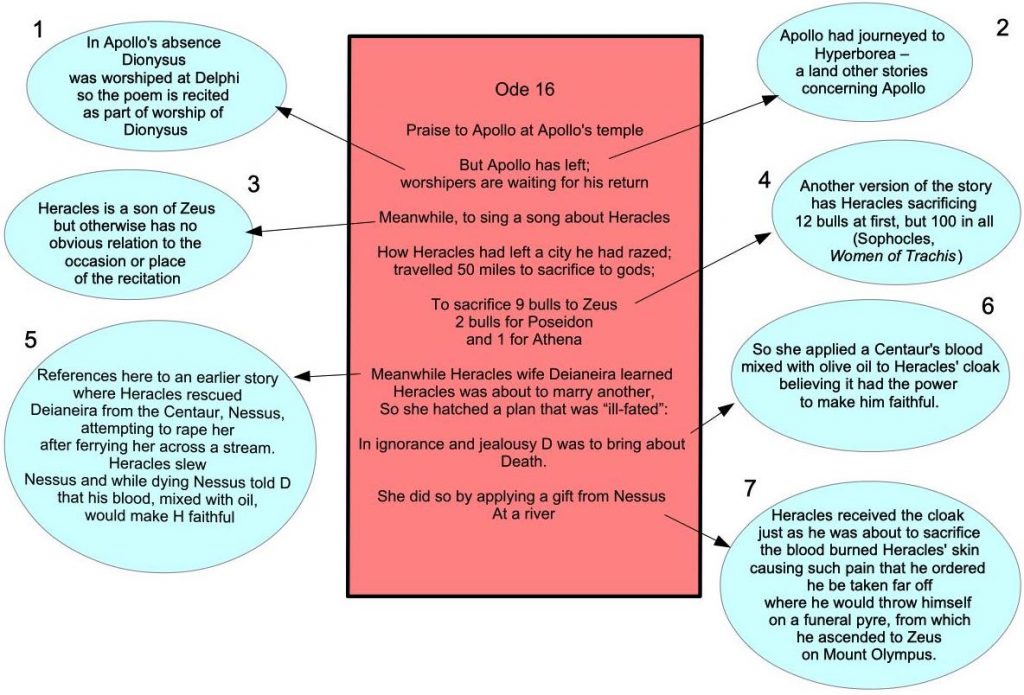 The point of the above? Johnston explains:
The point of the above? Johnston explains:
. . . . the Greeks cared less about always making tightly logical connections between festivals and myths than we have imagined—or to put it otherwise, that the contributions that mythic narratives made to creating and sustaining belief in the gods and heroes could be more broadly based than we have previously acknowledged. More specifically, I suggest that an essential element that enabled this breadth of applicability was the tightly woven story world that was cumulatively being created on a continuous basis by the myths that were narrated. The closely intertwined nature of this story world validated not only each individual myth that comprised it but all the stories about what had happened in the mythic past, the characters who inhabited them, and the entire worldview upon which they rested. Because it was embedded in this story world, a skillfully narrated myth about Heracles, for example, had the power to sustain and enhance belief not only in Heracles himself but in the entire cadre of the divine world of which he was a member, including those divinities to whom the festival at which the myth was performed was dedicated.
(Johnston, Greek Mythic Story World, 284)
It should be kept in mind that these myths were often performed publicly, at temples and festivals in honour of certain gods.
The audiences were primed by these conditions to open their minds to the ideas that the myths conveyed, and thus the two, festival and myth, mutually supported one another.
So what is it that “makes story worlds in general coherent and credible”, Johnston asks.

According to J.R.R. Tolkien there is the Primary World, the world in which we live, and then there is a Secondary World, one that an author creates and into which a reader enters — through “willing suspension of disbelief” (Coleridge?)? through “willing activation of pretense” (Saler)?, or, as Johnston prefers,
truly well-constructed story world requires no conscious decision at all on the part of audience members who participate in it — neither the suspension of disbelief nor the activation of pretense. It immerses readers or viewers so completely, yet so subtly, that they pass into it without even noticing that they are doing so.
(286)
A Secondary World needs to have a fence, a partition of some sort to separate it from our quotidian Primary World (Wolf). Dividing walls include wardrobe doors, rabbit holes, deserts traversed by houses carried in cyclones, interdimensional travel technology. Secondary Worlds are very different from Primary Worlds by virtue of strange inhabitants, strange landscapes, strange technology, and so forth. Greek myths are not exactly like that, nor are the gospels or other biblical stories. Yes, they do contain monsters, talking snakes and donkeys, but these oddities are placed in “our world”, a “real world”, the Primary World in which we all exist. They are the oddities in our “real” world; in Greek myths and biblical stories we have not, as a rule, entered worlds that are entirely strange in every way. (There are a few exceptions such as when Odysseus is on an island with a witch who changes his crew into wild beasts but such stories are set in a larger more recognizable world — with normal geographical, botanical and zoological features.)
Even when a monster does enter a Greek myth the author tends to indicate only minimal interest in its oddities. They are described as if in passing. The story is set in “a real-world” that we recognize as our own, or as the Greeks recognized as theirs: Continue reading “How Mythic Story Worlds Become Believable (Johnston: The Greek Mythic Story World)”

But what if you can’t turn off the TV because you don’t even think it’s there?
What if the materials that train the mind to think in certain ways and to accept alternative realities are not understood by the audience — and perhaps not by the authors, either — to be fictions, at least in the usual sense of that word? (Johnston)

This post is based primarily on the first of two essays by classicist Sarah Iles Johnston exploring why Greek myths captured imaginations so strongly and what made them “real”, even “historical”. We will see that Johnston’s thesis overlaps with M. David Litwa’s in How the Gospels Became History: Jesus and Mediterranean Myths but I will save a more detailed comparison with Litwa’s views when I return to reviewing that book.
Most of us know at least a few of the ancient myths and that’s part of the problem when it comes to understanding how the ancient peoples who believed them heard them. We have books with collections of myths and we read each myth ripped from the context in which it was originally understood.
I do want to suggest that, having fallen into the habit of excising Greek myths from their narratives, scholars have long overlooked one of the most salient and significant features of mythic narratives: their ability to engage their audiences emotionally and cognitively. . . . [T]his habit prevented us from understanding some of the most important reasons that myths were able to help create and sustain ancient Greek beliefs in the gods, heroes, and the divine world more generally . . . .
(Johnston, Narrating Myths, 174)
We will see that Johnston analyses the way Greek myths were able to allow listeners to feel that they were not merely hearing a story that happened long ago but that they themselves “were living amongst the gods and heroes, even if as lesser partners” (p. 190).
To make her case Johnston begins by explaining a very common type of ancient myth that was quite different from Greek myths. Johnston uses a term that is closely related to magic: “historiola”, meaning “a short mention of an analogous mythical story” (Maas, 37). Example, an Egyptian “historiola” myth:
… Isis came out of the spinning house [at the hour] when she loosened her thread. “Come, my sister Nephthys! See, my deafness has overtaken me! My thread has entangled me! Show me my way that I may do what I know [how to do], so that I may extinguish him with my milk, with the salutary liquids from within my breasts. It will be applied to your body, Horus, so that your vessels become sound. I will make the fire recede that has attacked you!”
While the mother recites these words, she applies her own milk to her child, just as Isis applied hers to Horus. The child’s fever is expected to break, just as Horus’s fever broke.
And one more:
To take another example: if a baby has a headache, then its mother might invoke the paradigm of “banished headache” by telling of how Christ pushed the Evil Eye off a rock to stop it from giving headaches to another baby, thus “persuading” her own child’s headache to go away as well (Pócs 2009.29, from a Romanian example that is still in use today).
(p. 177)
That’s magic, in my view. Repeat a story that happened long ago and in a far-off or far-away “world” and apply it to cause the same thing to happen in the present moment. They are like curse pronouncements. Repeat a formula that draws down the power of the spirits and have them act in this world accordingly.
But that’s not the way it worked with Greek myths.
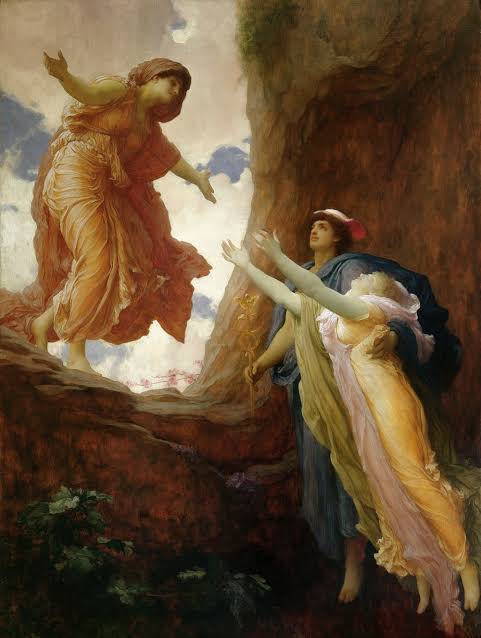 Take the myth of Persephone. In place of a direct cause-effect action between the mythic story and the real world we enter the realm of metaphor:
Take the myth of Persephone. In place of a direct cause-effect action between the mythic story and the real world we enter the realm of metaphor:
The story of Persephone’s annual return from the world of the dead, for example, when narrated in connection with the Eleusinian mysteries, was not meant to suggest that initiates into the mysteries would similarly return from the Underworld for a portion of each year after they had died, but rather reminded them that initiation ensured them happier existences down below once they had gotten there. Persephone’s experiences were a metaphor for those of the initiates; the two shared the salient characteristic of being partial triumphs over death but differed insofar as, among other things, although Persephone annually returned to the world of the living, the dead initiates did not. When narrated in connection with the Thesmophoria, the same story metaphorically expressed the celebrants’ hopes that crops would once again rise from the dark earth into which seeds were cast; the two shared the salient characteristic of anticipating the annual return of something desirable but differed insofar as, for example, although Persephone returned each year in her own right, the crops “returned” only in the sense that their seeds generated new plants to replace them (an idea that, in turn, served as a metaphor for the Thesmophoria’s other focus: the successful conception and birth of new human children). The fact that some stories, like this one, could serve as meaningful accompaniments for two different festivals with different primary goals underscores their metaphorical nature: had the relationship between the myths and the rituals I just described been one of straightforward analogy, such double service would not have worked very well.
(p. 184)
To understand the point further:
. . . the aim of a traditional historiola, after all, is to cause something in the quotidian realm to pattern itself after something in the mythic realm not in only one or two salient ways but rather as closely as possible.
(p. 182)
But Greek myths were not like that. They did not have that sort of magic power; they were not told to produce magical effects in this world.
. . . the deeds described by the myths existed on a continuum that flowed uninterruptedly into the time of the listeners. A well-narrated Greek myth would leave those listeners feeling not that they were repeating paradigmatic actions of the gods and heroes that had been performed eons ago (as is the case with historiolae), but rather that they were living amongst the gods and heroes, even if as lesser partners.
(p. 190)
No, the Greek myths were different. They somehow “prepared their audiences to feel as if they were living amongst the gods and heroes.”
Continue reading “Why Certain Kinds of Myths Are So Easy to Believe”

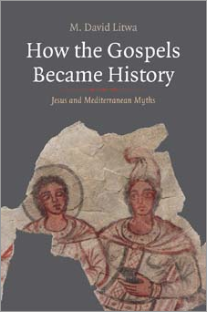 In chapter 9 M. David Litwa sets the Jesus narrative, specifically as told in the Gospel of Matthew, in the context of literary tropes surrounding ancient lawgivers.
In chapter 9 M. David Litwa sets the Jesus narrative, specifically as told in the Gospel of Matthew, in the context of literary tropes surrounding ancient lawgivers.
Solon of Athens: See his life by Plutarch and
Lycurgus of Sparta: See his life by Plutarch and Herodotus
Numa of Rome: See Plutarch
Zoroaster of Persia: See Internet Archive
Minos of Crete: See Dictionary of Greek and Roman Biography and Mythology
Charondas of Sicily: See Harpers Dictionary of Classical Antiquities
Zaleucus of southern Italy: See Dictionary of Greek and Roman Biography and Mythology
Mneves (Menas) of Egypt: See Diodorus Siculus (scroll down to para 94)
Zalmoxis (Salmoxis) of Thrace: See Herodotus and Strabo (scroll down to paras 39-40)
And, of course, not forgetting . . .
Moses: See Philo, parts 1 and 2; Josephus; Hecataeus; Artapanus
It seems more likely that Jesus was thought to have a coherent “message’ only after his death and so we have several different creations of it. . . .
[E]ither Q, Thomas, Matthew, Mark, Luke, and, for that matter, John did not know clearly what Jesus’ teachings were; or they didn’t care; or that they did know but disagreed with him so that they revised what he taught into something else; or that they did know what were said to be his teachings, did not trust those reports, and revised accordingly. Something odd is going on here. . . . .
When Sanders, standing in here for nearly all Jesus research scholars, says, “I do not doubt that he was a great and challenging teacher,” I am baffled. Mark doubts it (4:10-12, 8:17-21), neither Paul nor John pay any significant attention to those teachings, Luke cares little about the matter (taking Acts as representative of Luke’s bottom-line assessment). Scholarship, theological and historical both, is in a state of near conceptual chaos regarding the message of Jesus the Teacher: countercultural wisdom sage, peasant Jewish Cynic, Pharisaic rabbi, antipatriarchal communalist, eschatological preacher? If he had a coherent message and neither we nor his known near contemporaries know for sure what it was, he ought not to be thought, first and foremost, to have been a great and challenging teacher.
(Davies, Jesus the Healer, 12 f)
A few scholars (I’m thinking of Stevan Davies) even question the extent to which Jesus should be thought of as a teacher, or at least they draw attention to the doubts they have that we can even know what he taught.
Chapter 10 on the narratives of Jesus as a miracle worker I found of more interest, perhaps because this aspect of Jesus is covered in all four gospels.
Here Litwa’s philosophical introduction on the nature of miracles is too embedded in apologetics for my taste. He prefers to think of “inexplicable” events and repeats the apologetic argument that plausibility is culturally determined, that everything follows a law of nature as determined by God but that some of these divinely created laws or events we simply don’t yet understand. He writes
In the ancient world, plausible miracles could parade as historical; implausible ones were often labeled “mythical” (mythodes).
(Litwa, 136)
The first example of a “plausible miracle” raises problematic questions when it comes to how we are meant to understand Jesus’ miracles, however. According to Litwa’s reading Josephus used the “miracle” of Alexander’s crossing of the Pamphyialn Sea as a precedent that gave credibility to the Israelites crossing the Red Sea.
The story that the Pamphylian Sea receded before Alexander’s army, however, was apparently credited. According to historical report, Alexander’s entire army in all their heavy equipment passed through a sea channel that would have normally drowned them. This account was first told by Callisthenes of Olynthus, official historian of Alexander’s campaign and an apparent eyewitness of the event. Callisthenes assimilated Alexander to Poseidon by writing that the Pamphylian Sea “did not fail to recognize its lord, so that arching itself and bowing, it seemed to do obeisance [to Alexander].”5
Josephus mentioned the Pamphylian Sea miracle to make plausible his historiographical account of Moses parting the Red Sea.6 He knew that qualified and respected historians presented Alexander’s sea miracle as historiography.7 He even remarked that “all” historians agreed that the sea made a path for Alexander’s army.8 Thus Josephus felt justified in presenting his own (Jewish) sea miracle as an actual event in the past.
(Litwa, 136)
But there’s a but. Josephus changed the story as found in the Book of Exodus so it read more like a rare and coincidental natural event like the account of Alexander’s crossing. Here is Exodus 14:21-25 Continue reading “Review, parts 9 and 10a. Jesus as Lawgiver and Miracle Worker (Litwa: How the Gospels Became History)”

Epiphanies in the Greco-Roman world came in many forms. Violent natural phenomena (hailstorms, earthquakes, St Elmo’s fire, meteors, landslides) could be interpreted as the presence and action of gods defending their sanctuaries or favoured cities and routing enemies. At some point a narrative might personify the natural event and speak of Zeus or Poseidon descending and appearing as gods in all their awe so that they terrified enemies and caused them to panic.
Others epiphanies could be in the form of birds of various kinds.(Recall the dove at Jesus’ baptism.) Asclepius could appear as a snake.
Sometimes the epiphany came in a dream. Or in an ecstatic state a devotee might see a blinding light.
Statues could also “house” the god or represent his or her very real presence, especially in religious processions where the statue/god led the devotees, or when an army went out to battle.
Other times it could take the form of sensing the close presence of the deity, especially in the course of a religious ritual.
Another form was a god or goddess dwelling in a priest or priestess dressed especially for a ritual occasion.
In the world of fiction, at least, even astonishingly beautiful or handsome youths were believed to be deities.

I have shown in recent posts examples of those epiphanies where a god or hero appeared directly in his or her “real” human form. Sometimes large numbers of people were said or implied to have witnessed the epiphany. Yet often only one person was said to witness the deity and it was up to that solitary person to convince others — which they were often able to do.
So an observation by classicist Fritz Graf is of interest:
The Christians, however, easily outdid this. After his death, Christ appeared to two, not one, disciples on their way to Emmaus, thus providing the welcome plurality of witnesses. Again, we have moved from ritual to fiction. The Emmaus epiphany is no less or no more trustworthy than the angels who appeared to the group of shepherds of Bethlehem. Christianity, then, did not behave differently: it accepted collective epiphany in fictionalized texts (the Gospels, Acts) that would also convince the not yet convinced, and it accepted individual epiphany or vision, as in the case of Paul and his acceptance by the church of Corinth. (p. 124)
Of more general interest, Graf points to the ongoing importance of ritual:
Greek and, to a lesser degree, Roman civilization developed epiphany as a mode of imagining the intervention of the divine in the physical world. It also prepared ritual mechanisms to help underpin such epiphanic manifestations and to mediate the tension between empirical reality, where gods do not appear, and religious certainty, where they did exactly this. (p. 124)
The ritual Graf focuses on as the most common is the procession. There are others, of course.
In the light of the original ending of the Gospel of Mark (16:8) where we read that the women who saw and heard the “young man” in the tomb ran off “and told no-one what they had witnessed for they were afraid”, there is an account in Greek history of two witnesses resolving to tell no-one of an epiphany they had just encountered, again from fear.
There is a story which used to be told by Dicaeus, the son of Theocydes, an Athenian exile who had made a name for himself in Persia. After the evacuation of Attica, when the Persian troops were devastating the countryside, this person happened to be in the plain of Thria with Demaratus the Spartan. Noticing a cloud of dust, such as might have been raised by an army of thirty thousand men on the march, coming from the direction of Eleusis, they were wondering what troops they could be, when they suddenly heard the sound of voices. Dicaeus thought he recognized the Iacchus song, which is sung at the Dionysiac mysteries, but Demaratus, who was unfamiliar with the religious ceremonial of Eleusis, asked his companion whose voices they were. ‘Sir,’ Dicaeus answered, ‘without any doubt some dreadful disaster is about to happen to the king’s army. There is not a man left in Attica; so the voice we heard must clearly be not of this world – it is a divine voice, coming from Eleusis to bring help to die Athenians and their friends. If it descends upon the Peloponnese, there will be danger for the king and for his army; if it moves towards the ships at Salamis, Xerxes may well lose his fleet. Every year die Athenians celebrate a festival in honour of the Mother and the Maid, and anyone who wishes, from Athens or elsewhere, may be initiated in the mysteries; the sound you heard was the Iacchus song which is always sung at diat festival.’
‘Do not breathe a word of this to anybody,’ said Demaratus. ‘If it should reach the ears of the king, you would lose your head, and neither I nor anyone else in the world could save you. So hold your tongue – the gods will see to the king’s army.’
While Demaratus was speaking, the cloud of dust from which the mysterious voice had issued, rose high into the air and drifted away towards Salamis, where the Greek fleet was stationed. By tliis the two men knew that the naval power of Xerxes was destined to be destroyed. Such was Dicaeus’ story, and he used to appeal to Demaratus and others to witness the truth of it.
(Herodotus, 8.65)
Here we read that the story was eventually told, but presumably only after there was no longer any need to fear the consequences. I’ll leave it to you to wonder if there is anything of significance here for how one might interpret the gospel.
Graf, Fritz. 2004. “Trick or Treat? On Collective Epiphanies in Antiquity.” Illinois Classical Studies 29: 111–30. https://www.jstor.org/stable/23065343
Versnel, Henk. “What Did Ancient Man See When He Saw a God? Some Reflections on Greco-Roman Epiphany.” In Effigies Dei : Essays on the History of Religions, edited by Dirk van der Plas. Studies in the History of Religions 51. Leiden ; New York: Brill, 1987. https://www.academia.edu/11350657/WHAT_DID_ANCIENT_MAN_SEE_WHEN_HE_SAW_A_GOD_SOME_REFLECTIONS_ON_GRECO-ROMAN_EPIPHANY.
Herodotus. The Histories. Translated by Aubrey De Sélincourt. Harmondsworth, Middlesex: Penguin Books, 1965.

We have been looking at some accounts among ancient historians of gods and heroes appearing among eyewitnesses and acting in history. Did the ancient historians and biographers who wrote of those events believe they were true? What of other people who heard of those stories? Did they believe them?
In my review posts of How the Gospels Became History: Jesus and Mediterranean Myths by M. David Litwa I have pointed out a number of times that historians of ancient times generally distanced themselves from reports of the appearances of gods or miraculous events: they did so with terms such as “it is said that . . .”, “a rumour spread that . . .”, etc. This distancing technique stands in contrast with fictional stories where the authors write from the all-knowing stance and simply say that the appearances of gods and miracles did happen. Ditto for the gospels. (There are a few exceptions that I have pointed out, the most notable one being Suetonius’s account of Augustus Caesar. Omens are also often written about as if they really happened but these are usually accounts of naturally occurring events — birds fighting, an unexpected storm — that are interpreted as divine signs.)
As for the historians and biographers themselves, we can assume they had an above average education so their reservations when they came to writing about the supernatural or mythical are not surprising. We would expect the less educated on the whole to be less cautious when they were exposed to the myths that were at the heart of their piety. Classicist Jorge Bravo of the University of Maryland has published the evidence for the two different approaches to myths, or more specifically towards myths about Greek heroes, “mortal figures who were thought to possess some residual power after death.” To clarify the meaning of hero:
But what is a hero? In modern usage the word carries with it a positive valorization, describing anyone who accomplishes great feats and inspires admiration and emulation.
For the ancient Greeks, at least by the Classical period, the designation applied to a broad spectrum of figures that included not just the well-known warriors of Homeric epic and other early legends but also more shadowy figures, about whom, to judge by our ancient sources, the Greeks themselves knew only the slightest details. . . .
What does unite the heterogeneous lot of Greek heroes is first a belief that they were, in fact, mortals, not gods; they lived and died, whether in the remote past or in recent times. Moreover, although now dead, they are believed to have a power over the living, and as a consequence they are worshiped alongside the gods.
(Bravo, Recovering the Past, 11)

As has been pointed out in previous posts . . .
The authors [ancient historians and biographers] are prone to distance themselves from pronouncing on the authenticity of the claimed epiphanies, and the accounts allow for different opinions about the events that transpired. One indicator of this authorial mediation is the frequent use of the term φάσμα [=phasma: apparition, phantom . . . ]. . . .
. . . the use of the term φάσμα in the ancient literary accounts of heroic epiphany qualifies the experience that the author is relating to the reader, leaving open to doubt the veracity of the claim.
(Bravo, Heroic Epiphanies, 67-68)
I have pointed to other distancing phrases like “It is said that…” Here Bravo identifies the use of φάσμα (phasma) as another.
Some examples. One in Pausanias, speaking of Aristomenes, the leader of the Messenian revolt against Sparta, in the seventh century BCE.
After waiting only for the wound to heal, he was making an attack by night on Sparta itself, but was deterred by the appearance of Helen and of the Dioscuri [φασμάτων Ἑλένης καὶ Διοσκούρων] (Pausanias, 1.16.9)
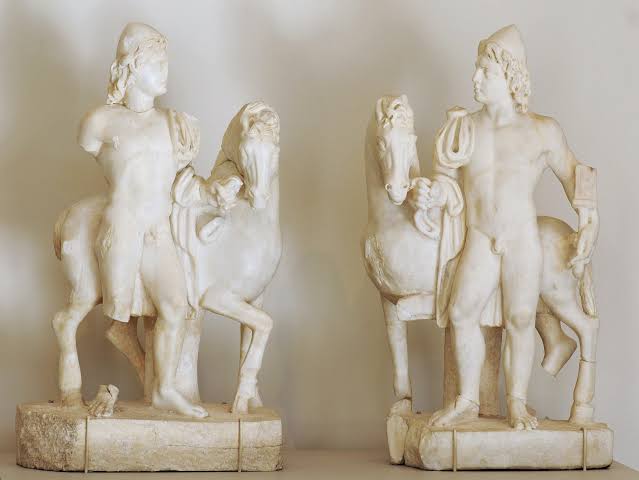
The Dioscuri, of course, are the Twins, Castor and Pollux, our better known Gemini.
Another in Herodotus of a moment in the Battle of Salamis (480 BCE):
The story is also told that the phantom of a woman [φάσμα σφι γυναικὸς] appearedto them, who cried commands loud enough for all the Hellenic fleet to hear, reproaching them first with, “Men possessed, how long will you still be backing water? (Herodotus, 8.84)
Plutarch records that many believed Theseus appeared at the Battle of Marathon (490 BCE):
In after times, however, the Athenians were moved to honor Theseus as a demigod, especially by the fact that many of those who fought at Marathon against the Medes thought they saw an apparition of Theseus [φάσμα Θησέως] in arms rushing on in front of them against the Barbarians. (Plutarch, Theseus, 35.5)
Why might φάσμα be a distancing word?
In light of the dichotomy between image and reality entertained in Greek thought from the fifth century on, the use of the term φάσμα calls into question the veracity of the superhuman event. It opens the door to alternative explanations for the events, for instance the possibility that military leaders staged events to inspire courage and confidence.
(Bravo, Heroic Epiphanies, 68. Bolded highlighting is my own in all quotations)
Here are some examples of people faking appearances of gods and heroes, but what is most significant for us is that did so knowing that at least a significant number of others would be fooled, would really believe. The first listed here is non-committal, saying only that “some” thought the events were tricks orchestrated by the leaders.
The Thebans accordingly decorated this monument before the battle. Furthermore, reports were brought to them from the city that all the temples were opening of themselves, and that the priestesses said that the gods revealed victory. And the messengers reported that from the Heracleium [=Temple of Heracles] the arms also had disappeared, indicating that Heracles had gone forth to the battle. Some, to be sure, say that all these things were but devices of the leaders.
(Xenophon, Hellenica, 6.4.7 — the battle described took place in 371 BCE)
I find that example of particular interest because it matches one of the signs listed by Josephus before the fall of Jerusalem. See the fourth sign in Miracles with Multiple Jewish and Roman Eyewitnesses: I had wondered why people would consider the self-opening of temple doors to be a good omen and the passage in Xenophon suggests that the people would have interpreted it as evidence that the god/s had gone forth to fight their enemies.
The next two extracts refer to the Messenian revolt against Sparta in the seventh century BCE.
The Lacedaemonians [=Spartans] were keeping a feast of the Dioscuri in camp and had turned to drinking and sports after the midday meal, when Gonippus and Panormus appeared to them, riding on the finest horses and dressed in white tunics and scarlet cloaks, with caps on their heads and spears in their hands. When the Lacedaemonians saw them they bowed down and prayed, thinking that the Dioscuri themselves had come to their sacrifice.
When once they had come among them, the youths rode right through them, striking with their spears, and when many had been killed, returned to Andania, having outraged the sacrifice to the Dioscuri.
(Pausanias, 4.27.2-3)
Another account of the same:
On the day of the festival, when the Lacedaemonians [=Spartans] make a public sacrifice to the Dioscuri, Aristomenes the Messenian and a friend mounted on two white horses, and put golden stars on their heads. As soon as night came on, they appeared at a little distance from the Lacedaemonians, who with their wives and children were celebrating the festival on the plain outside the city. The Lacedaemonians superstitiously believed that they were the Dioscuri, and indulged in drinking and revelling even more freely. Meanwhile, the two supposed deities, alighting from their horses, advanced against them with sword in hand. After leaving many of them dead on the spot, they remounted their horses, and made their escape.
(Polyaenus, Stratagems of War, 2.31.4)
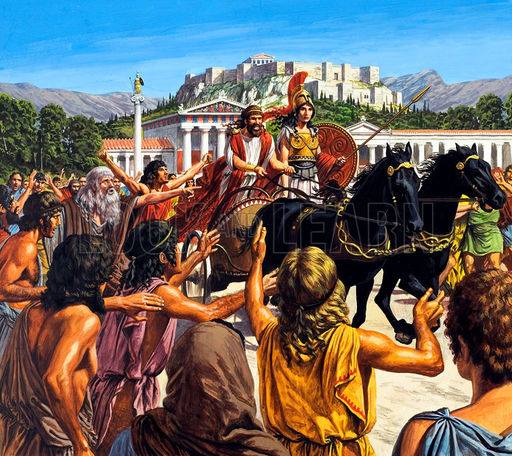
I’ll add one more, this one from Herodotus who makes no effort to hide his embarrassment.
The Greeks have never been simpletons; for centuries past they have been distinguished from other nations by superior wits; and of all Greeks the Athenians are allowed to be the most intelligent: yet it was at the Athenians’ expense that this ridiculous trick was played. In the village of Paeania there was a handsome woman called Phye, nearly six feet tall, whom they fitted out in a suit of armour and mounted in a chariot; then, after getting her to pose in the most striking attitude, they drove into Athens, where messengers who had preceded them were already, according to their instructions, talking to the people and urging them to welcome Pisistratus back, because the goddess Athene herself had shown him extraordinary honour and was bringing him home to her own Acropolis. They spread this nonsense all over the town, and it was not long before rumour reached the outlying villages that Athene was bringing Pisistratus back, and both villagers and townsfolk, convinced that the woman Phye was indeed the goddess, offered her their prayers and received Pisistratus with open arms.
(Herodotus, Histories, 1.60)
It should be evident that a good number of ancient Greeks were willing to believe that gods and heroes continue to act in history and their own day and are not figures confined exclusively to some remote “heroic age”. More sophisticated authors might express some reservations but they did not deny that many others were “true believers”.
Jorge Bravo devotes the second part of his article to the non-literary evidence. He heads it
and begins,
While authors may interject a note of uncertainty in their accounts of epiphany, for many ancient Greeks the experiences were undeniable. Such popular beliefs fueled religious responses, including the dedication of offerings. A passage in Plato’s Laws alludes to this dynamic. Plato has his Legislator promote a law to curb what he regards as foolish popular religious practices (909e-910a):
… It is customary for all women especially, and for sick folk everywhere, and those in peril or in distress (whatever the nature of the distress), and conversely for those who have had a slice of good fortune, to dedicate whatever happens to be at hand at the moment, and to vow sacrifices and promise the founding of shrines to gods and demi-gods and children of gods; and through terrors caused by waking visions (εν τε φάσμασιν) or by dreams, and in like manner as they recall many visions and try to provide remedies for each of them, they are wont to found altars and shrines … (Loeb).
This documents how individuals frequently responded to visions and other experiences with dedications and the foundations of shrines. Indeed the evidence is strong that the sheer number of offerings could at times present problems for sanctuaries.
In the iconography of votive dedications, accordingly, one should find direct testimony of the kinds of private beliefs that could be called into question by authors.
(Bravo, Heroic Epiphanies, 68 f)
Anyone interested in Christian origins will surely pause over the above quotation. It suggests that one might expect to find records of dedications at the tomb of Jesus or at sites in Galilee where Jesus had made a splash with a speech or miracle of some kind, or at a site near Caesarea Philippi where Peter first acknowledged Jesus to be the Christ, or at the Mount of Olives and Gethsemane, or even the Jordan where John baptized, and pilgrimages to the wilderness where he was tempted or where he persuaded by some mysterious means for crowds of thousands to be fed. (Those who respond with some quip to the effect that ancient Jews were not like that, not like the Greeks, would have to explain why it is recorded that Jesus said the Pharisees did just that sort of thing with the tombs of the prophets.) But let’s move on. Continue reading “Ancient Belief that Divinities Appeared on Earth in the Present and Historical Past — (with half a glance at Christian origins)”

Please accept our sincere apologies if any of your comments aren’t posted to the blog immediately. Recently, we have been weathering a spam tsunami, and our current settings may be triggering some false positives. As we work things out, you could experience delays.
If a significant amount of time goes by, and you still haven’t seen your comment appear, drop us a line via email or ping us on Facebook.
As always, thanks for reading Vridar. We always appreciate your input and your support.


If we accept the common dating of Josephus’s account of the Jewish War, around 75 CE, then consider what this means for the historicity of the following events. Apply the reasoning of those who argue for the historicity of New Testament miracles. Josephus declares he is recording events no more than ten years earlier and he speaks of eyewitnesses.
First a star stood over the City, very like a broadsword, and a comet that remained a whole year.
Then before the revolt and the movement to war, while the people were assembling for the Feast of Unleavened Bread, on the 8th of Xanthicos at three in the morning so bright a light shone round the Altar and the Sanctuary that it might have been midday. This lasted half an hour. The inexperienced took it for a good omen, but the sacred scribes at once gave an interpretation which the event proved right.
During the same feast a cow brought by someone to be sacrificed gave birth to a lamb in the middle of the Temple courts,
while at midnight it was observed that the East Gate of the Inner Sanctuary had opened of its own accord – a gate made of bronze and so solid that every evening twenty strong men were required to shut it, fastened with iron-bound bars and secured by bolts which were lowered a long way into a threshold fashioned from a single slab of stone. The temple-guards ran with the news to the Captain, who came up and by a great effort managed to shut it. This like the other seemed to the laity to be the best of omens . . . .
A few days after the Feast, on the 21st of Artemisios, a supernatural apparition was seen, too amazing to be believed. What I have to relate would, I suppose, have been dismissed as an invention had it not been vouched for by eyewitnesses and followed by disasters that bore out the signs. Before sunset there were seen in the sky over the whole country, chariots and regiments in arms speeding through the clouds and encircling the towns.
Again, at the Feast of Pentecost, when the priests had gone into the Inner Temple at night to perform the usual ceremonies, they declared that they were aware, first of a violent movement and a loud crash, then of a concerted cry: ‘Let us go hence.’
(Josephus, Jewish War, 6)
A star “over a city” is as nonsensical to us as a star positioned over the house where Jesus was found. And comets do not stay around for a full year. But how could Josephus get away with writing such things within ten years of them supposedly happening unless they were true and could not be contradicted by eyewitnesses, both Roman and Jewish?
Josephus further tells us that priests saw and interpreted the signs and priests would hardly lie. They were, after all, attempting to tell the masses that what they had seen should be interpreted as a sign from God carrying a different message.
If the cow giving birth to a lamb had been said to have happened in a cowshed or behind an outhouse then we could dismiss it easily enough. But how could Josephus expect to get away with saying it happened right in the middle of the Temple courts? Surely there were scores of eyewitnesses.
As for the appearance of angelic armies in the sky being confirmed by eyewitnesses, we can well believe it. We know the same type of event was recorded but a mere month after the battle at Mons in 1914: see the Angels of Mons.

One response (though tongue-in-cheek) to the previous post about Greek gods and heroes appearing and acting in historical times should be addressed:
At least one of the epiphanies in that post had (presumably) hundreds of eyewitnesses — the appearance of Apollo and his sisters Artemis and Athena routing the Gauls. Surely scores witnessed Vespasian’s miracles, too. But let’s look at some more.
First, however, here is an account that in some ways reminds me of the Book of Acts version of Paul being the sole witness to a god who blinded him. This is written “only” about 45 years after the event.
In the battle at Marathon about six thousand four hundred men of the foreigners were killed, and one hundred and ninety-two Athenians; that many fell on each side. The following marvel happened there: an Athenian, Epizelus son of Couphagoras, was fighting as a brave man in the battle when he was deprived of his sight, though struck or hit nowhere on his body, and from that time on he spent the rest of his life in blindness. I have heard that he tells this story about his misfortune: he saw opposing him a tall armed man, whose beard overshadowed his shield, but the phantom passed him by and killed the man next to him. I learned by inquiry that this is the story Epizelus tells. (Herodotus, Histories 6:117)
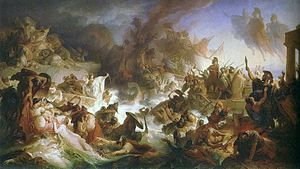
The next one had a whole army of witnesses and belongs to a battle (Salamis) only 35 years before Herodotus wrote about it.
Then the Hellenes set sail with all their ships, and as they were putting out to sea the barbarians immediately attacked them. The rest of the Hellenes began to back water and tried to beach their ships, but Ameinias of Pallene, an Athenian, charged and rammed a ship. When his ship became entangled and the crew could not free it, the others came to help Ameinias and joined battle. The Athenians say that the fighting at sea began this way, but the Aeginetans say that the ship which had been sent to Aegina after the sons of Aeacus was the one that started it. The story is also told that the phantom of a woman appeared to them, who cried commands loud enough for all the Hellenic fleet to hear, reproaching them first with, “Men possessed, how long will you still be backing water?” (Herodotus, Histories 8:84)
Or per Aubrey De Sélincourt’s translation:
There is also a popular belief that the phantom shape of a woman appeared and, in a voice which could be heard by every man in the fleet, contemptuously asked if they proposed to go astern all day, and then cheered them on to the fight.
Plutarch records the tradition that the hero Theseus personally turned up at the Battle of Marathon, a fact testified by many witnesses:
But in succeeding ages, beside several other circumstances that moved the Athenians to honor Theseus as a demigod, in the battle which was fought at Marathon against the Medes, many of the soldiers believed they saw an apparition of Theseus in arms, rushing on at the head of them against the barbarians. (Life of Theseus, 35:5)

Pausanias documents more miraculous events at Marathon — and with masses of eyewitnesses!
They say too that there chanced to be present in the battle a man of rustic appearance and dress. Having slaughtered many of the foreigners with a plough he was seen no more after the engagement. When the Athenians made enquiries at the oracle the god merely ordered them to honor Echetlaeus (He of the Plough-tail) as a hero. (Pausanias, 1.32.5)
Pausanias adds another hero’s appearance at the naval battle of Salamis:
In Salamis is a sanctuary of Artemis, and also a trophy erected in honor of the victory which Themistocles the son of Neocles won for the Greeks. There is also a sanctuary of Cychreus. When the Athenians were fighting the Persians at sea, a serpent is said to have appeared in the fleet, and the god in an oracle told the Athenians that it was Cychreus the hero. (Pausanias, 1.36.1)
Around 365 BCE during the Peloponnesian War when Arcadians invaded Elis, Pausanias informs us of another divine miracle before two entire armies:
The story is that when the Arcadians had invaded the land of Elis, and the Eleans were set in array against them, a woman came to the Elean generals, holding a baby to her breast, who said that she was the mother of the child but that she gave him, because of dreams, to fight for the Eleans. The Elean officers believed that the woman was to be trusted, and placed the child before the army naked.
When the Arcadians came on, the child turned at once into a snake. Thrown into disorder at the sight, the Arcadians turned and fled, and were attacked by the Eleans, who won a very famous victory, and so call the god Sosipolis. On the spot where after the battle the snake seemed to them to go into the ground they made the sanctuary. With him the Eleans resolved to worship Eileithyia also, because this goddess to help them brought her son forth unto men.
The tomb of the Arcadians who were killed in the battle is on the hill across the Cladeus to the west. Near to the sanctuary of Eileithyia are the remains of the sanctuary of Heavenly Aphrodite, and there too they sacrifice upon the altars.” (Pausanias, 6.20.4-6)
None of the above is a story relating far-off events in some remote “heroic age” when gods and heroes walked the earth fighting giants and monsters. They are all said to have happened in historical time and often to be supported by multiple eyewitnesses.
In the case of god Asclepius (see the previous post) we even have a personal eyewitness account by Isyllus. He writes of a personal encounter with the god when he was a boy. It was not a dream. It was an event that took place in the daytime. Asclepius was not some ethereal ghost, either, but in full battle armour and engaging in conversation.
Continue reading “Greek Gods and Heroes with Multiple Historical Eyewitnesses”

Here are a few of many instances of ancient “records” of gods and heroes acting in historical times, sometimes within little more than a generation of the one documenting the event. Hopefully, these extracts will help dispel the myth that ancient Greek gods and heroes belonged exclusively to some way-off remote “heroic age” — with the inference, of course, that the gospels are not as far removed from Greco-Roman mythical stories as is sometimes claimed.
Asclepius and Amphiaraus regularly worked cures in their sanctuaries while their clients slept, and sometimes even met their patients face-to-face—on one occasion, Asclepius arrived dressed in shining golden armor. (Johnston, 308)
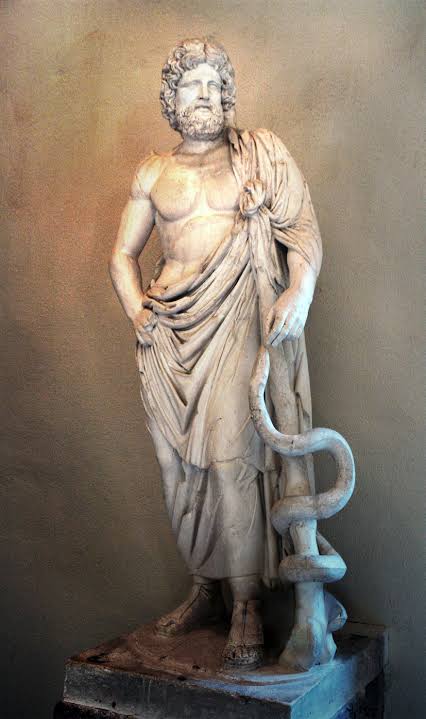
A Greek poem written in the “late fourth century BCE” (Claus, 178) / “ca. 300 B.C.” (SEG 53-365) in honour of the god Apollo and hero-god Asclepius describes an event when Asclepius in “shining golden armour” appeared and spoke to a boy before speeding off to fight to defend Sparta from King Philip of Macedon — in 346 BCE.
And of your power, Asclepius, you gave this example in the days when Philip, wishing to destroy the royal authority, led his army against Sparta. To them from Epidaurus Asclepius came as a helper, honouring the race of Heracles, which consequently Zeus spared. He came at the time when the sick boy came from Bosporus. Shining in your golden armour, you met him as he approached Asclepius; and when the boy beheld you, he drew near to you, stretching forth his hand and entreated you in suppliant words :
“I have no share in your gifts, Asclepius Paean ; have pity on me.”
Then you addressed these words to me clearly : “Take heart, for I shall come to you in due time – just wait here – after I have rescued the Lacedaemonians from grievous doom because they justly guard the precepts of Apollo which Lycurgus ordained for the city, after he had consulted the oracle.”
And so he went to Sparta. But my thoughts stirred me to announce the divinity’s advent to the Lacedaemonians, everything in exact order. They listened to me as I spoke the message of safety, Asclepius, and you saved them. And they called upon all to welcome you with honours due a guest, proclaiming you the Saviour of spacious Lacedaemon. These words, O far the best of all the gods, Isyllus set up for you, honouring your power, O Lord, as is seemly.
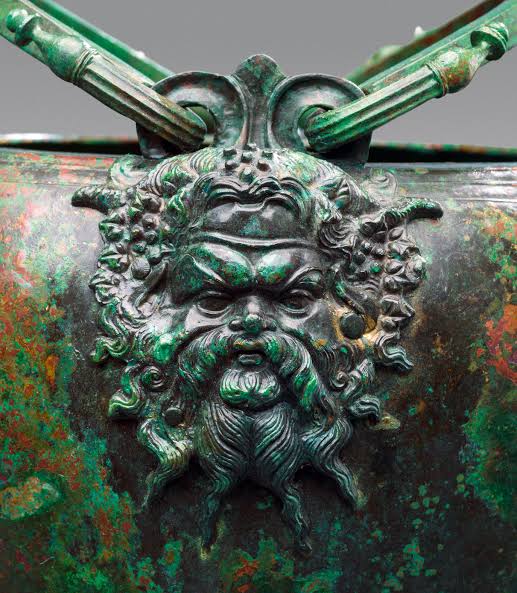
The Battle of Marathon was in 490 and Herodotus wrote Histories around 440 BCE.
Before they left the city, the Athenian generals sent off a message to Sparta. The messenger was an Athenian named Pheidippides, a trained runner still in the practice of his profession. According to the account he gave the Athenians on his return, Pheidippides met the god Pan on Mount Parthenium, above Tegea. Pan, he said, called him by name and told him to ask the Athenians why they paid him no attention, in spite of his friendliness towards them and the fact that he had often been useful to them in the past, and would be so again in the future. The Athenians believed Pheidippides’ story, and when their affairs were once more in a prosperous state, they built a shrine to Pan under the Acropolis, and from the time his message was received they have held an annual ceremony, with a torch-race and sacrifices, to court his protection.
(Herodotus: 6.105 – Perseus site)
Suetonius wrote during the reign of Hadrian (117-138) and Vespasian ruled from 69 to 79 CE:
A common man who had lost his sight and another who was lame approached him together as he sat before the tribunal, begging for the remedy for their ailments which Serapis had revealed in a dream; for he could heal eyes by spitting upon them and make whole a leg if he deigned to touch it with his heel. Although he had little faith that this could possibly succeed and indeed did not dare to put it to the test, finally, at the insistence of his friends, he undertook both actions in public before an assembly and met with success. At the same time, with the guidance of seers, some vessels of ancient workmanship were dug up in a sacred spot at Tegea in Arcadia, bearing an image very like that of Vespasian.
(Suetonius: Vespasian, 7 – Perseus site)
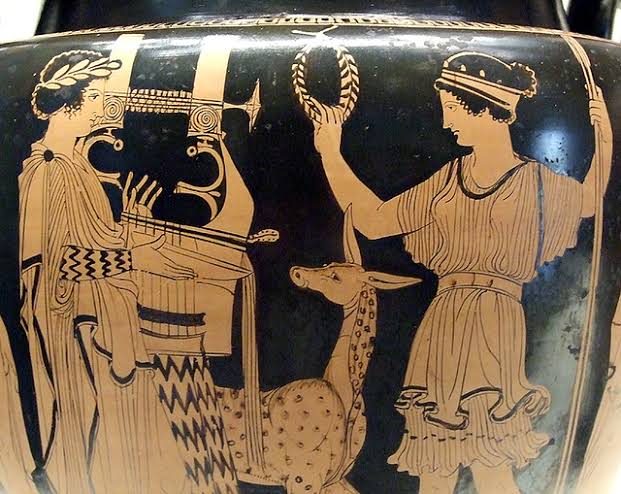
Apollo’s worshipers were threatened by an invasion of Gauls in 279 BCE. Supernatural women — perhaps his sisters Artemis and Athena — appeared alongside him in the battle. Multiple traditions survive, and I list three here from the first century BCE.
Such an apparition is said to have occurred to Brennus, and to his Gallic troops, when he was waging an impious war upon the temple of Apollo at Delphi. For on that occasion it is reported that the Pythian priestess pronounced these words:
“I and the white virgins will provide for the future.”
In accordance with which, it happened that the Gauls fancied that they saw white virgins bearing arms against them, and that their entire army was overwhelmed in the snow.
(Cicero, On Divination, 1.37)
Brennus, the king of the Gauls, accompanied by one hundred and fifty thousand infantry, armed with long shields, and ten thousand cavalry, together with a horde of camp followers, large numbers of traders, and two thousand waggons, invaded Macedonia and engaged in battle. Having in this conflict lost many men . . . as lacking sufficient strength . . . when later he advanced into Greece and to the oracle at Delphi, which he wished to plunder. In the mighty battle fought there he lost tens of thousands of his comrades-in‑arms, and Brennus himself was three times wounded. Weighed down and near to death, he assembled his host there and spoke to the Gauls. He advised them to kill him and all the wounded, to burn their waggons, and to return home unburdened; he advised them also to make Cichorius king. Then, after drinking deeply of undiluted wine, Brennus slew himself. After Cichorius had given him burial, he killed the wounded and those who were victims of cold and starvation some twenty thousand in all; and so he began the journey homeward with the rest by the same route. In difficult terrain the Greeks would attack and cut off those in the rear, and carried off all their baggage. On the way to Thermopylae, food being scarce there, they abandoned twenty thousand more men. All the rest perished as they were going through the country of the Dardani, and not a single man was left to return home.
Brennus, the king of the Gauls, on entering a temple found no dedications of gold or silver, and when he came only upon images of stone and wood he laughed at them, to think that men, believing that gods have human form, should set up their images in wood and stone.
At the time of the Gallic invasion the inhabitants of Delphi, seeing that danger was at hand, asked the god if they should remove the treasures, the children, and the women from the shrine to the most strongly fortified of the neighbouring cities. The Pythia replied to the Delphians that the god commanded them to leave in place in the shrine the dedications and whatever else pertained to the adornment of the gods; for the god, and with him the White Maidens, would protect all. As there were in the sacred precinct two temples of extreme antiquity, one of Athena Pronaia and one of Artemis, they assumed that these goddesses were the “White Maidens” named in the oracle.
(Diodorus Siculus, 22.9)
Continue reading “Greek Gods and Heroes Active in the Historical World”

It sure looked like Trump was going all out to provoke a war with Iran — or maybe he was too stupid to think through the consequences of assassinating Qassem Soleimani [link is to Vridar post on QS’s bio] that far in advance. Then came this tweet:
And that tweet seems to have been forced out of him only after the Saudi’s themselves announced the meeting: see White House Press Association Rebukes Trump Administration for Secret Saudi Meeting in Oval Office.
The Saudis are having a hard enough time with the Iranian backed Houthis in Yemen and they recently saw how vulnerable their oil depots were to drone strikes. Anyway, Trump suddenly started talking of de-escalation and allowed the Iranians to respond so long as they gave warning so that no lives would be lost.
U.S. and Israeli hawks have long been itching for war with Iran, and that war would have been a perfect deflection from the impeachment mess. One can’t help but wonder what was discussed at that meeting with Trump and the Saudis.
Or am I just being alt-conspiratorial?
One thing is for sure, though. Obama managed with international support to “guarantee” Iran’s security if they gave up on a nuclear weapons program. I somehow find it inconceivable that Iran won’t have a nuclear weapon relatively soon. Trump’s action seems to have made that almost inevitable — so it seems when I read Dana Kennedy’s article in DCReport.org: The Suleimani Assassination May Set Back U.S. Intelligence Gathering: Striking the General Revealed NSA Capability to Spy on Top Iranians and Their Nuclear Weapons Program. After all, Trump does have a history of letting little secrets slip. Terrorists have learned not to use cell phones when they communicate; no doubt (given Dana Kennedy’s article) Iranians have now learned a similar lesson with respect to a (surely revamped) nuclear weapons program.
Iranian leadership would surely be even more madly insane than Trump if they don’t go all out to get a nuclear weapon now. How else could they “guarantee” their security from invasion or “shock and awe” bombing?
Meanwhile, the U.S. troops who continue to occupy the country they “liberated” have been obliged to turn away from their stated goal of “mopping up the remnants” of ISIS and standing guard against Iranian proxy attacks.
A nuclear-armed Iran (may not be such a bad thing for the immediate future), a resurgent ISIS — even a restored caliphate?, an inevitable eventual withdrawal of the U.S. from Afghanistan and Iraq — unless, perhaps, the Saudis change their minds and offer to flatter Trump if he changes his mind once more on Iran.
But I’m only musing. I have no idea. A mere citizen who tries to keep on top of the news and what’s happening, or seems to be happening.